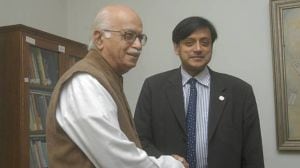In search of India’s missing markets
On Thursday, Sebi approved the launch of five new derivative products to provide investors a wide range of risk mitigation products...

• On Thursday, Sebi approved the launch of five new derivative products to provide investors a wide range of risk mitigation products and create more activity in the onshore market.
• On Friday, a Reserve Bank of India (RBI) panel recommended the introduction of trading in currency futures to enable market participants to better manage currency risk exposures.
Percy Mistry, who chaired the High Powered Committee on making Mumbai an International Finance Centre (IFC), spoke about the “missing markets” that will make India a global financial powerhouse. It might be a case of “better late than never”, but financial regulators in India are taking sure and steady steps to create those missing markets.
The new derivative products — mini-contracts on equity indices, options with longer life/ tenure, volatility index and F&O contracts, options on futures, bond indices and F&O contracts, exchange-traded currency (foreign exchange) futures & options and introduction of exchange-traded products to cater to different investment strategies — approved by Sebi — will provide investors with a larger range of risk mitigation products and create more activity in the Indian onshore markets.
“These products are expected to bring transactions based on private-synthetic products to an exchange-traded transparent mechanism with appropriate regulatory supervision,” Sebi said. The RBI has proposed dedicated exchanges for currency futures and mooted the entry of resident Indians first to be followed by non-resident Indians and foreign investors.
The issue of currency futures is more relevant now. When the rupee appreciates against the dollar, the exposure would result in gain or loss for residents purchasing or selling the dollar. As unpredicted movements in exchange rates expose investors to currency risks, currency futures enable them to hedge these risks.
But this is only the beginning. The bond market is yet to develop and the securitisation market has not reached anywhere. According to the Mistry report, in creating an IFC in Mumbai, the authorities need to comprehend the challenge of developing the BCD nexus — the bond market, the currency market, and the derivatives market (in interest rates and currencies) — as an integral package whose individual components cannot be de-linked.
Are the regulators going slow in developing the markets?
“The RBI is going exactly the appropriate way,” said RBI Governor Y V Reddy. “Some people may have wanted to go fast. By and large, it’s the responsibility of the RBI to ensure that reform is not an end in itself. Reforms have an end… that’s improvement in efficiency. In this you cannot sacrifice stability, pace of reforms and sequencing. And elements of reforms have to be carefully worked out and overall efficiency improved and stability maintained.”
The RBI has admitted that the only area which is lagging is corporate debt, development of which depends on other factors. “When there are no long-term contractual savings, where are the long-term funds? Insurance has just started, pensions funds have not even started. Another requirement is the government securities market that we have established now. If we don’t have a properly developed G-Sec market, there can’t be a corporate debt market. In proper sequencing, in a way we’re reasonably at a good stage. The corporate debt market is now confined to financial institutions; it’s through private placement and there is very little trading, little fair price discovery — these are structural characteristics which have to change. It has started changing,” Reddy said in a recent interview to the The Indian Express.
Big money and players will come only when sophisticated products are available for trading. “The Indian markets need more over the counter (OTC) derivative products to attract big players and big money. The participatory note (PN) is an OTC product (where trades are done directly between two parties). But our systems and intermediaries should be prepared and big players should be allowed to enter,” said a market source.
Opined Prakash Subramanian KV, managing director and regional head, South Asia (capital markets), of Standard Chartered Bank, “They are opening up these segments in a phased manner after studying the full implications in the marketplace and do not want institutions to get into these products without understanding the associated risks.”
For example, the RBI had recently come with the draft guidelines on credit derivatives and obtained feedback from market participants. They are also planning to initially allow only banks and PDs to trade in this instrument. However, once the market stabilises and systems are in place, they will probably allow other participants like insurance companies, MFs and overseas investors like FIIs and hedge funds to participate.
Experts say that Mumbai can become an international financial centre only when these markets are properly developed. Not only that, big money and players will enter India only when such facilities are available, making the financial markets stronger and deeper.
The BCD Nexus
• Bond market yet to be developed properly
• Currency futures yet to begin; draft norms out
• Credit derivative norms also out; trading yet to begin
• Securitisation market fails to take off
• OTC products yet to be worked out



- 01
- 02
- 03
- 04
- 05




























